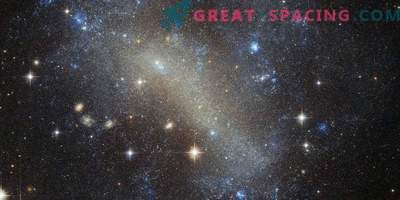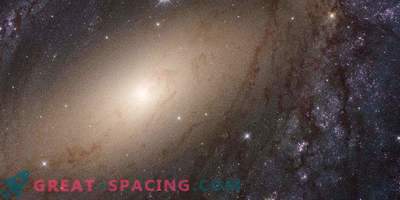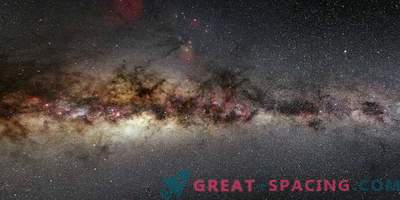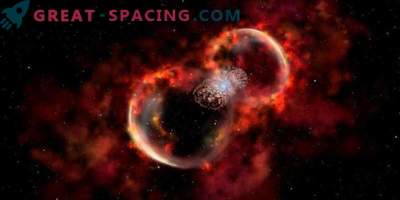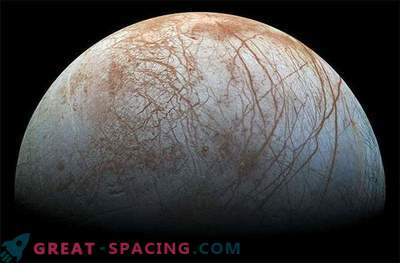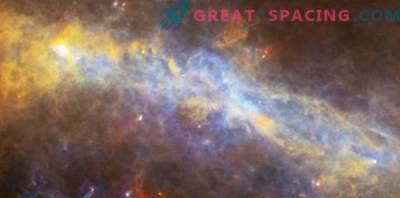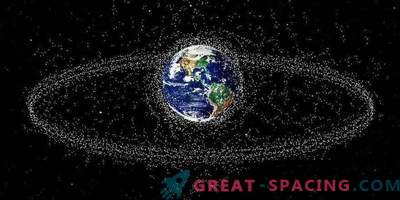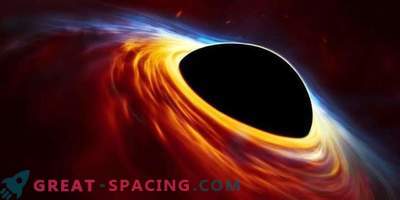
European astronomers have conducted a study of a star-shaped dwarf galaxy of galaxies located in the halo of galaxy NGC 4634. The new data provide more information about the nature and origin of the original object.
The spiral galaxy NGC 4634 is 62.3 million light-years distant from us and is a member of the Virgo cluster. In terms of dynamic mass, it exceeds solar one by 27 billion times and is endowed with increased activity of stellar birth. In the halo, diffuse X-rays and a pronounced diffuse ionized gas component are noticeable.
In 2008, the dwarf galaxy candidate was noticed precisely in the halo of NGC 4634, approximately 4,600 light years from the median plane of the spiral galaxy. The first reviews showed that it could be a stellar and gas-rich, dwarf irregular galaxy hurt by the gravitational forces of NGC 4634. But additional observations were needed to understand the real nature.

Hα-image of a candidate for dwarf galaxies
A new study reveals more detailed information about the object. The analysis is based on spectroscopic data from the Hubble Space Telescope, the GMRT radio telescope and the 3.6-meter telescope of the European Southern Observatory. Do not forget to take into account the photometry from SDSS and the GALEX database. Images of r-band, b-band, and hydrogen-alpha luminescence show that the candidate dwarf galaxy in diameter covers approximately 1,800 light years and confirms the presence of an active stellar formation. The researchers recorded a high oxygen content, which hints at the formation of a candidate from a pre-enriched material. Most likely, it was obtained from the NGC 4634 disc or is equally chemically enriched.
The analysis also demonstrates that the heliocentric velocities of the candidate dwarf galaxy and its host are similar, indicating a connection between them. It turns out that the halo of NGC 4634 accommodates an object of stellar formation of significant size, formed from gas cut from a spiral galaxy. Because of this, NGC 4634 becomes an excellent laboratory for studying galactic evolution.




